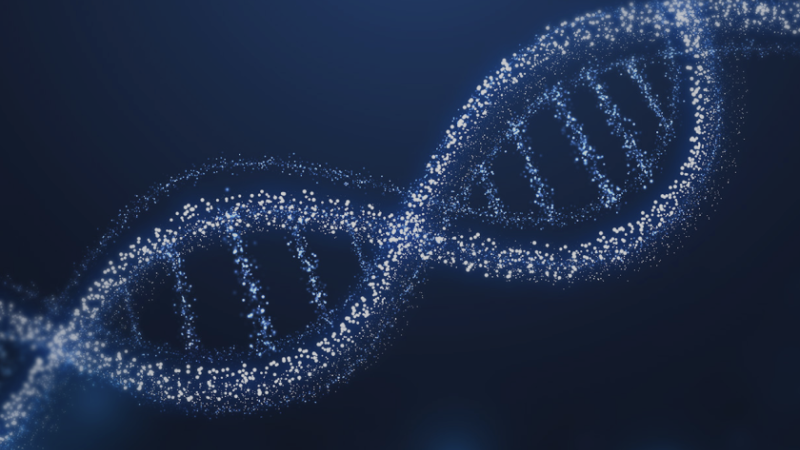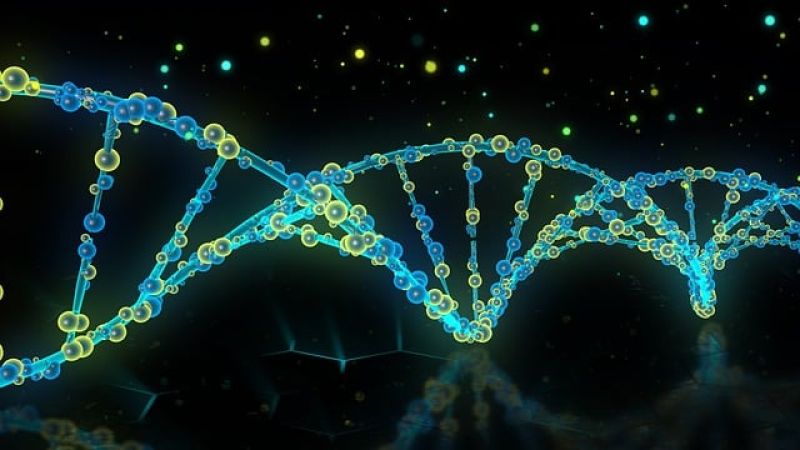
Unraveling the Science Behind Bryan Johnson’s Pursuit to Reverse Aging
In recent years, there has been a growing interest in the field of aging research and the possibility of reversing the effects of aging. One prominent figure at the forefront of this pursuit is Bryan Johnson, an entrepreneur and philanthropist who has dedicated significant resources to unraveling the science behind aging. This article will delve into Johnson’s motivations, the science of aging, his approach to reversing it, and the potential implications of such a breakthrough. It will also address the challenges and criticisms associated with this field of research.
Understanding Bryan Johnson’s Motivation
Johnson’s passion for reversing aging stems from a deeply personal journey. Like many, he has witnessed the toll that aging takes on loved ones, both physically and mentally. This firsthand experience has fueled his desire to find a solution and improve the quality of life for individuals as they age.
Johnson firmly believes that aging should not be accepted as an inevitable part of life. He is driven by the conviction that we can slow down, halt, and even reverse the aging process with the right scientific advancements and interventions. But what led Johnson to this realization? How did he come to understand that aging is not an immutable process?
The Personal Journey Towards Reversing Aging
Johnson’s realization1 that aging is not an immutable process came after encountering scientific studies highlighting the potential for interventions to slow down or even reverse the aging process. This transformative discovery prompted him to dedicate his resources and efforts to aging research.
While exploring the scientific literature, Johnson stumbled upon groundbreaking studies that revealed the remarkable regenerative capabilities of certain organisms. He learned about the intricate mechanisms that allow these organisms to repair and rejuvenate their cells, effectively defying aging.
These findings ignited a spark within Johnson. He realized that if nature had already provided examples of organisms capable of reversing aging, then perhaps it was possible to replicate and harness these mechanisms for the benefit of human beings.
Driven by curiosity and a deep desire to make a difference, Johnson embarked on a journey of discovery. He sought out leading scientists, researchers, and experts in the field of aging to learn from their knowledge and insights. Through countless conversations and collaborations, he gained a comprehensive understanding of the biological processes underlying aging and the potential avenues for intervention.
The Role of Entrepreneurship in Aging Research
As an entrepreneur, Johnson believes in the power of innovation to drive progress. He recognizes that the aging process is a complex biological phenomenon, requiring multidisciplinary approaches to understand and address it fully. By exploring aging through an entrepreneurial lens, he aims to bring together experts from various fields to accelerate the development of breakthrough technologies.
Johnson understands that the pursuit of reversing aging requires not only scientific expertise but also a strategic and entrepreneurial mindset. He believes that by fostering collaboration between scientists, engineers, and entrepreneurs, we can expedite the translation of scientific discoveries into practical solutions.
Johnson has established research initiatives and partnerships with leading institutions and organizations through his entrepreneurial endeavors. He has provided funding and resources to support innovative projects that aim to unravel the mysteries of aging and develop interventions that can extend human healthspan.
His entrepreneurial approach to aging research is rooted in the belief that combining scientific rigor with business acumen can create a future where aging is no longer a barrier to a fulfilling and vibrant life.
The Science of Aging: A Brief Overview
To comprehend Johnson’s pursuit, you must first grasp the underlying biological processes of aging. Aging is a multifaceted phenomenon involving many interconnected factors, including genetic, epigenetic, and environmental influences.
Understanding the science behind aging is crucial in unraveling the mysteries of this complex process. It is at the cellular and systemic levels that aging manifests its effects. At the cellular level, various factors contribute to the gradual decline in function and vitality. One such factor is accumulated DNA damage, which occurs over time due to exposure to environmental toxins, radiation, and normal metabolic processes. This damage can lead to mutations and impair the cell’s ability to function optimally.
Another cellular process that contributes to aging is telomere shortening. Telomeres are protective caps at the ends of chromosomes that gradually shorten with each cell division. As telomeres shorten, cells become more susceptible to DNA damage and eventually reach a point where they can no longer divide, leading to cellular senescence.
In addition to DNA damage and telomere shortening, mitochondrial dysfunction also plays a role in aging. Mitochondria are the cell’s powerhouses responsible for producing energy in the form of ATP. However, as you age, mitochondrial function declines, leading to decreased energy production and increased oxidative stress. This oxidative stress can further damage DNA and other cellular components, contributing to aging.
At the systemic level, aging involves the decline in organ function and the deterioration of the immune system. As you age, organs such as the heart, lungs, and kidneys gradually lose their ability to function optimally. This decline in organ function can lead to a variety of age-related diseases, such as cardiovascular disease, respiratory disorders, and kidney failure.
The immune system also changes with age, a process known as immunosenescence. As the immune system weakens, older individuals become more susceptible to infections, autoimmune diseases, and cancer. This decline in immune function is attributed to a combination of factors, including changes in the composition of immune cells, decreased production of immune cells, and impaired immune response.
The Current State of Aging Research
Aging research has made significant strides in recent years, uncovering potential interventions that may slow down or reverse the aging process. Scientists and researchers worldwide are dedicated to understanding aging mechanisms and developing strategies to promote healthy aging.
One area of research that has gained considerable attention is genetic manipulations. By studying the genes that regulate aging, scientists have identified specific genetic pathways that influence lifespan and healthspan. Manipulating these pathways in model organisms, such as worms, flies, and mice, has shown promising results in extending lifespan and delaying age-related diseases.
Another avenue of research is focused on pharmaceutical interventions. Scientists are exploring various compounds and drugs that can potentially target specific aging pathways and promote healthy aging. These interventions aim to mitigate the effects of age-related cellular and systemic damage, ultimately improving overall health and extending lifespan.
Furthermore, lifestyle factors such as diet2 and exercise have also been shown to influence the aging process. A healthy diet rich in antioxidants, vitamins, and minerals can help reduce oxidative stress and inflammation, both of which contribute to aging. Regular physical activity has also been associated with improved cardiovascular health, increased muscle mass, and enhanced cognitive function in older adults.
In conclusion, the science of aging is a complex and fascinating field of study. By delving into the biological processes of aging at the cellular and systemic levels, researchers are gaining insights into the mechanisms that drive this natural phenomenon. With ongoing research and advancements in technology, scientists hope to unravel the secrets of aging and develop interventions that enable individuals to live longer, healthier lives.
Bryan Johnson’s Approach to Reversing Aging
Regarding reversing aging, Bryan Joh3nson has a unique approach that revolves around the intersection of technology and biology. He firmly believes that innovative technologies, such as neural interfaces, hold the key to unlocking the secrets of aging and developing effective interventions.
But what exactly does this intersection of technology and biology entail?
The Intersection of Technology and Biology
Technological advancements have revolutionized the field of biology. With the advent of artificial intelligence and machine learning, scientists now have the tools to analyze biological data on an unprecedented scale. This allows them to unravel the aging process’s intricacies and identify potential intervention targets.
Researchers can delve into the molecular mechanisms underlying aging by utilizing these cutting-edge technologies. They can study the genetic factors contributing to aging and identify ways to manipulate them. This deeper understanding of the biology of aging opens up new avenues for developing interventions that can slow down or even reverse the aging process.
The Importance of Neural Interfaces
One of the key components of Bryan Johnson’s approach is the use of neural interfaces. These interfaces, which allow direct communication between the brain and external devices, hold immense promise in aging research.
Neural interfaces have already shown great potential in various fields, such as restoring movement to paralyzed individuals or helping people with neurodegenerative diseases regain their independence. But their potential goes beyond that.
By harnessing the power of neural interfaces, scientists hope to enhance cognitive functioning in aging individuals. During aging, cognitive decline becomes a common occurrence, affecting memory, attention, and overall mental sharpness. Neural interfaces could potentially help reverse or mitigate these age-related cognitive impairments.
Furthermore, neural interfaces could also play a crucial role in tackling neurodegenerative diseases, such as Alzheimer’s or Parkinson’s. The progressive loss of neurons and cognitive decline characterize these conditions. By establishing direct communication between the brain and external devices, neural interfaces could potentially slow down or even halt the progression of these devastating diseases.
In conclusion, Bryan Johnson’s approach to reversing aging is a fascinating blend of technology and biology. By leveraging technological advancements and exploring the potential of neural interfaces, he aims to unlock the secrets of aging and develop effective interventions. The intersection of technology and biology offers a promising path towards a future where aging is no longer an inevitable process but a condition that can be managed and even reversed.
The Potential Implications of Reversing Aging
The implications of reversing aging are far-reaching and have sparked lively debates within the scientific community and society at large.
Ethical Considerations and Debates
The prospect of extending the human lifespan raises ethical questions surrounding the distribution of resources, overpopulation concerns, and the potential impact on societal dynamics. Engaging in thoughtful discussions to address these ethical challenges and ensure equitable access to any potential breakthroughs is crucial.
The Future of Human Longevity
Reversing aging has the potential to redefine the concept of human longevity. It could enhance both the quantity and quality of years, allowing individuals to lead fulfilling lives for extended periods. It may also redefine traditional life stages and fundamentally impact healthcare, retirement, and societal structures.
The Challenges and Criticisms
While the pursuit of reversing aging holds immense promise, it is not without its challenges and critics.
The Skepticism Surrounding Anti-Aging Research
Some skeptics question the feasibility of reversing aging, arguing that the complexity of the aging process necessitates a more nuanced approach. They emphasize the need for continued research and caution against premature claims.
The Hurdles in Translating Science into Practice
Translating scientific discoveries into tangible interventions poses a significant challenge. The gap between laboratory findings and real-world applications is vast, requiring rigorous testing, regulatory approvals, and substantial investments. However, Johnson remains steadfast in his commitment to bridging this gap and transforming scientific breakthroughs into practical solutions.
In conclusion, Bryan Johnson’s pursuit to reverse aging can revolutionize one’s understanding of human longevity and transform how aging is approached. While many challenges and skeptics remain, Johnson’s dedication and multidisciplinary approach offer hope for a future where aging is no longer an inevitable decline but rather a reversible process. As the field continues to advance, it is crucial to maintain a robust dialogue and consider the ethical implications to ensure that any breakthroughs are utilized responsibly for the benefit of all. Begin your pursuit to reverse aging with the AgingSOS® Starter Panel to test your longevity biomarker panels.
Lastly, if you’re interested in going deeper on health-related content, here are a few of our recent posts that you may want to read:
- What Does Peak Performance Look Like?
- Andrew Huberman is Wrong About NAD, NAD+ precursor & Longevity
- 9 Powerful Benefits of Optimizing Your NAD
- Why Optimized, Precision Medicine is the Future
Reference Sources:
Read More














